What started 24 years ago as a way to review the latest movies and albums, attend concerts for free and distract from the busy Georgetown University lifestyle has evolved into a legitimate entertainment publication in itself, with interviews across the years from Hollywood titans like actor Bradley Cooper (COL ’97) and director Danny Boyle.
The section, which today features dozens of staff writers and publishes articles online daily, is a far cry from what it was at its inception in 1996. Yet as The Guide has evolved, its foundational purpose of providing arts and entertainment content to Georgetown has remained true.
The Guide-ing Light
The Guide was founded in fall 1996 as an expansion to The Hoya’s one- to two-page weekly entertainment section. The initial reasoning behind creating the section was twofold, according to Andrew Curry (SFS ’98), who served as The Guide’s first editor.
“As far as I knew there had always been an entertainment section, but it was usually one or two pages once a week,” Curry said in a phone interview with The Hoya. “It just seemed like there was a lot of potential that was unrealized.”
With the support of the then Editor-in-Chief John Keenan (COL ’98), Curry went to work on expanding the section to reflect student interests. The Guide was chosen as the section’s name because it would function as a guide to arts and entertainment both on and off campus, according to Curry.
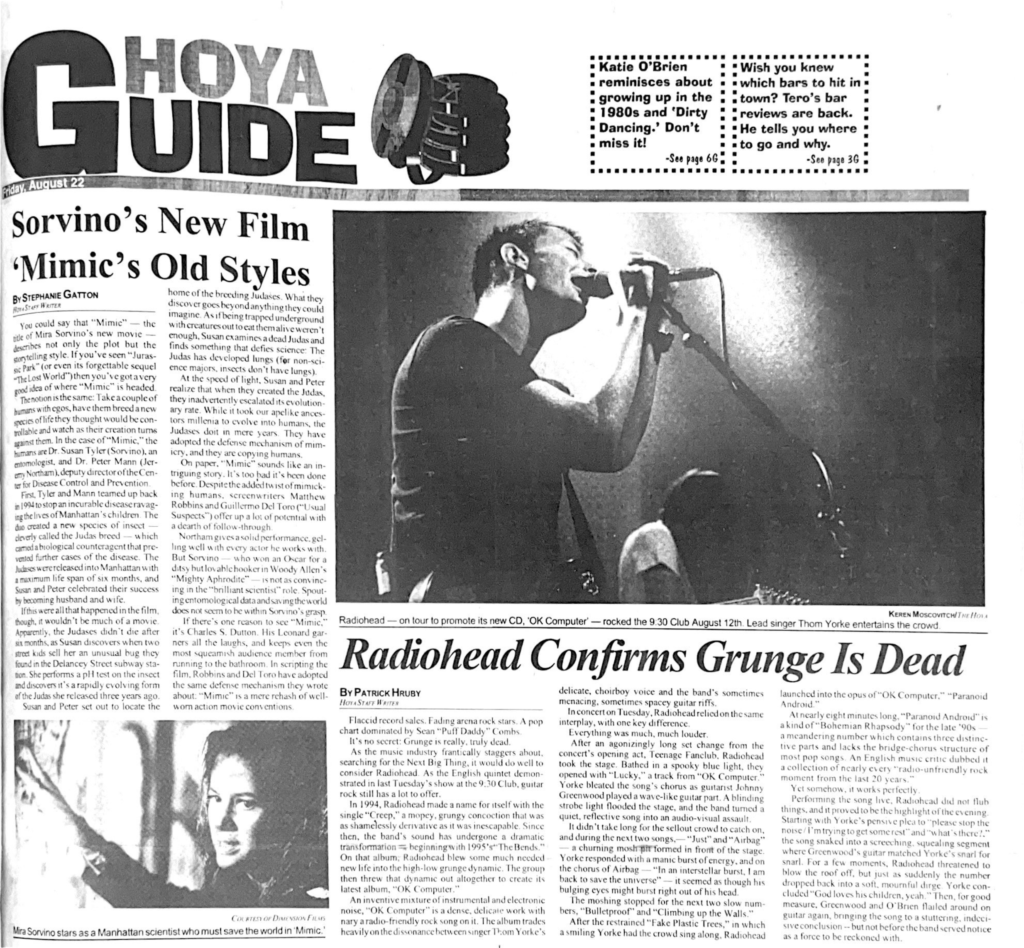
In its first semester, The Guide expanded from its intended four weekly pages to nearly outsizing the news and sports sections of the paper as its own insert, according to Curry.
“At the beginning of the semester, we didn’t really know if it was sustainable,” Curry said. “Would we be able to keep expanding and growing? Would there be enough content? And then it turned out that there was, and so it kept growing.”
In an era that predated mass internet communication, The Guide was instrumental in allowing students to access entertainment. Curry called local theaters and asked for movie listings that were printed weekly in the paper. Labels sent The Hoya CDs and glossy pictures of bands, seeking coverage to spread their message across campus.
The early days of The Guide, however, were not without notoriety. One of the very first columns The Guide ran was a bar column, in which a student would review local Washington, D.C. bars. This column, and the rest of The Guide, sparked the ire of the administration, according to Keenan.
“The administration was complaining,” Keenan said in a phone interview with The Hoya. “They were saying, ‘You’re devoting so many inches to stories about non-campus things like movie reviews,’ and our bar review section, which they really didn’t like.”
The Guide was able to continue, however, by providing an outlet for creative students to express their interests, while also creating more opportunities to work for The Hoya, according to Keenan.
“What I did was I tried to reframe the conversation with the administration about increasing the amount of articles per issue,” Keenan said. “We can increase the number of students participating, which the administration saw as a benefit to the community.”
Shiny New Features
The Guide persisted in its early form throughout the 1990s and 2000s, with the intermediary years featuring revolving content sections, including graphics of what was on top of the music charts that week and an advice column.
Much of the change in The Guide’s content has come more recently, after the section became its own independent, magazine-style section of the paper three years ago. This change gave The Guide a distinct identity from the rest of The Hoya’s content that persists today, according to Marina Tian (NHS ’19), who served as Guide editor in spring 2017.
“Formatting wise, it’s changed a lot, which gives The Guide its own identity more throughout the years,” Tian said in a phone interview with The Hoya. “That’s also fluctuated from before I started to during my time at The Hoya, from being more Georgetown focused to more D.C. focused.”
The focus of The Guide shifted from its review section to its weekly feature cover story, otherwise known as DTs, as editors like Tian began to take a more journalistic approach to the section. These stories allow writers to blend creative writing with journalism, granting the section more prestige, according to Meena Raman (MSB ’20), who served as Guide editor in fall 2017, the first semester of the change to a magazine format.
“DTs have evolved to reflect important things at Georgetown, like mental health and sexuality — topics that are important on campus but that are also increasingly identified to the core community,” Raman said in a phone interview with The Hoya. “So I think The Guide — even though it sometimes gets a reputation of being a less illustrious section — it still has a very vocal identity.”
Shifting the focus of The Guide’s content was also crucial to advancing The Guide as a reputable entertainment publication that focused itself on journalism, according to Toby Hung (COL ’18), who served as Guide editor in spring 2016 and editor-in-chief in 2017.
“As a section, [The Guide] affords the most flexibility and creativity to its writers,” Hung wrote in an email to The Hoya. “During my time at The Hoya, I made it a priority to publish DTs, features and special issues on pertinent topics that readers cared about.”
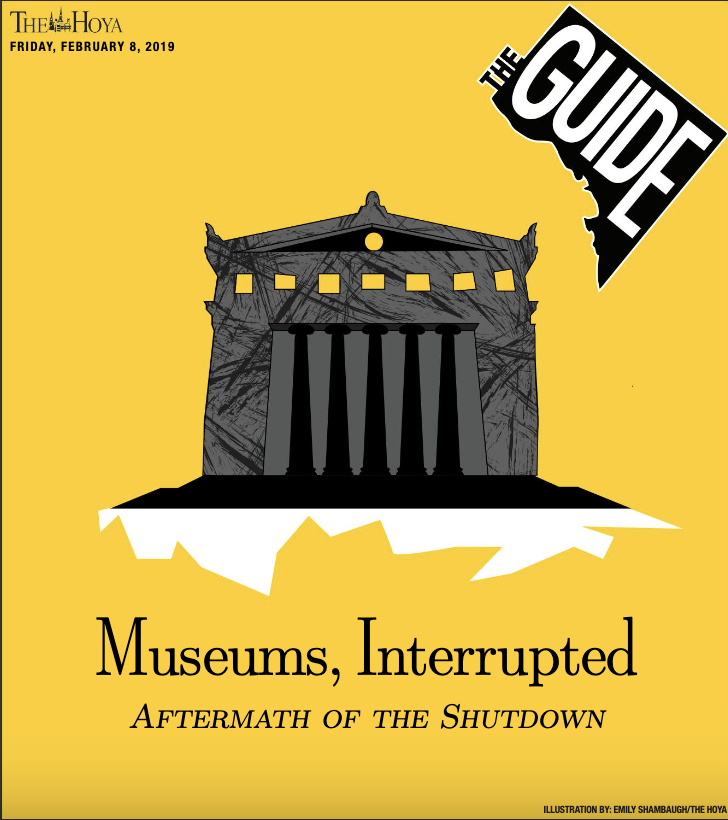
Turning to Specialty
The Guide’s new focus on journalism and spotlighting important topics on and off campus has been more recently represented in the section’s special issues, which started as early as 2013. From the Sex Issue published during Raman’s tenure to last semester’s Sustainability Issue, special issues remain a focal point of every semester for The Guide.
Special issues are usually a combination of a feature-length cover story, shorter articles and engaging graphics produced with the help of the design team all centered around a central topic. The Guide also publishes a fashion issue every semester, with themes revolving around current trends in the fashion world.
This evolution of special issues allowed for editors to explore how special issues could be redone, according to Tian.
“At the time, I think we were trying to think more creatively about what other special issues you can do,” Tian said. “So we used a more submissions style issue for our special issue that semester, a travel issue, and also for our fashion issue.”
While The Guide’s focus has shifted dramatically in its 24 years, its core purpose of covering arts and entertainment for Georgetown students has remained intact. The longevity and impact of the section for The Hoya was unexpected to Curry but continues to showcase the importance of institutional memory.
“I’m really proud that it’s still going — nearly a quarter of the time that The Hoya has existed, and it wasn’t self-evident when we started that that would be the deal,” Curry said. “It’s really wonderful to me that through all the different ways that journalism has changed, that Georgetown has changed, people have found a way to keep The Guide strong and thriving.”
CORRECTION: A previous version of this article stated that the magazine format was adopted permanently during Tian’s tenure as Guide Editor. The format was actually adopted during Raman’s tenure. The article has been updated to reflect this information.


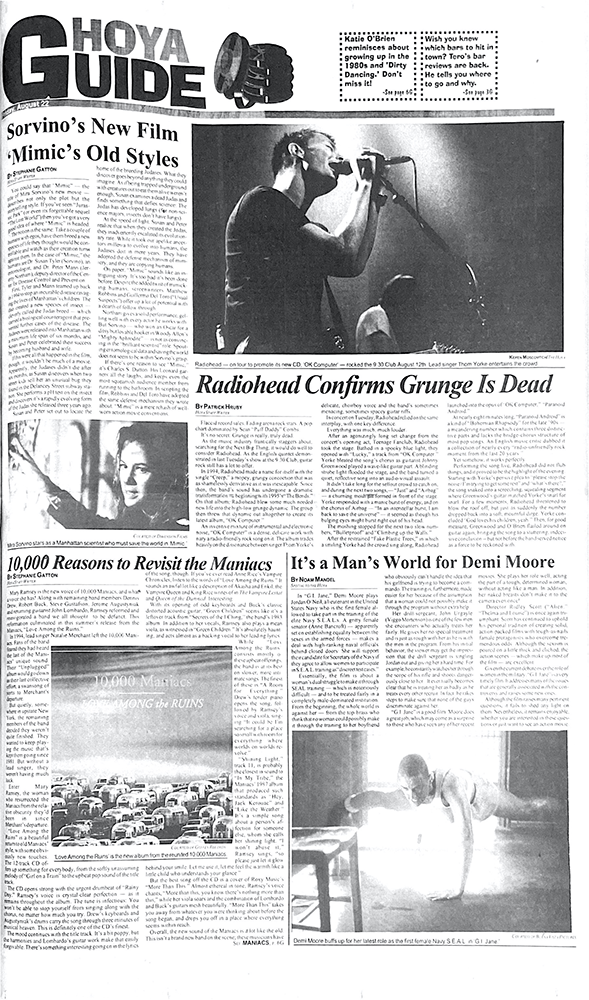






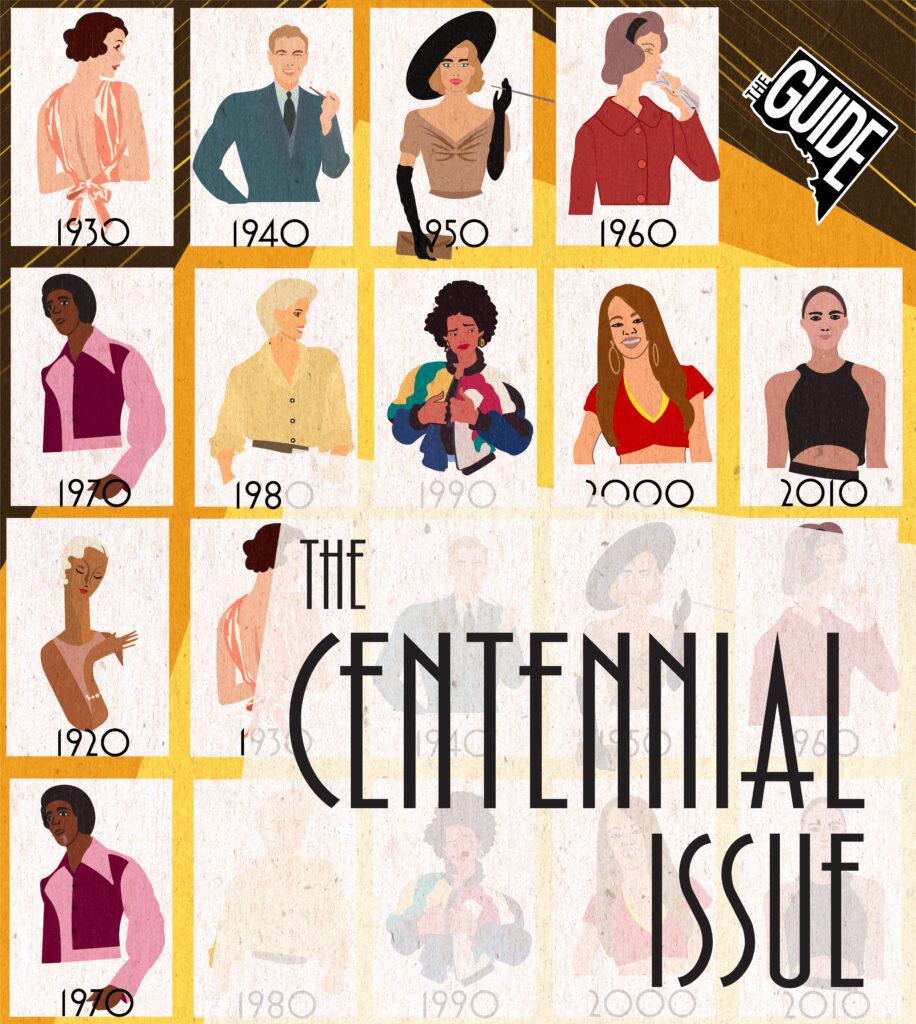

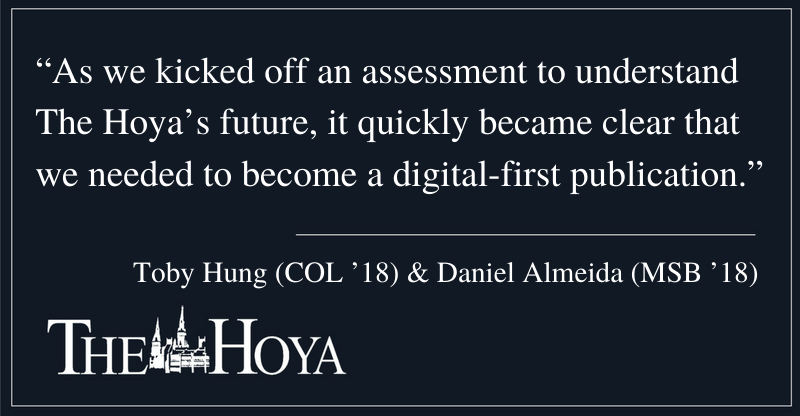
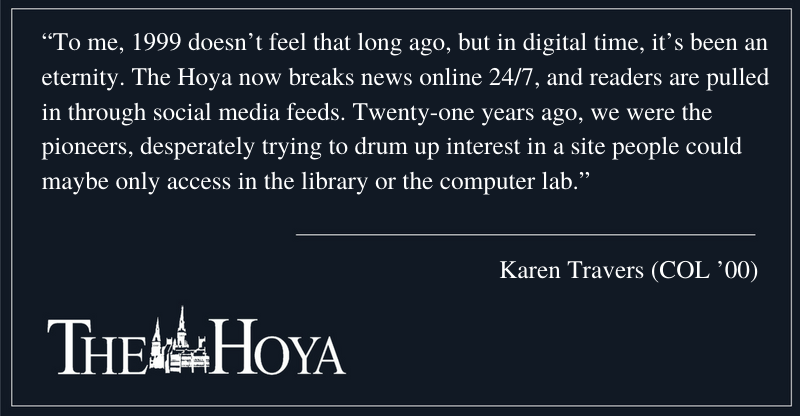
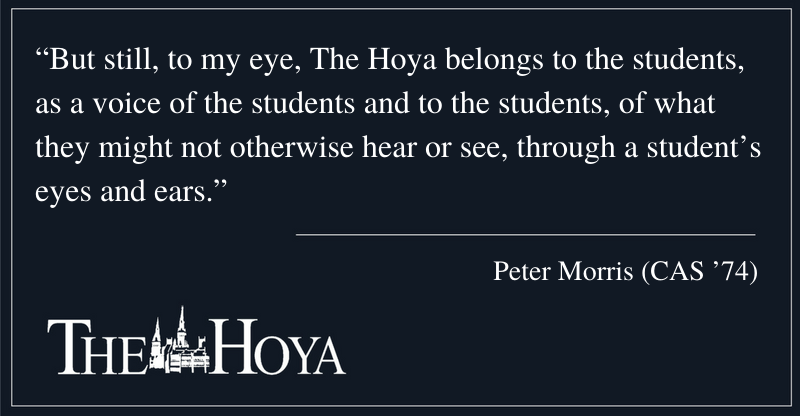
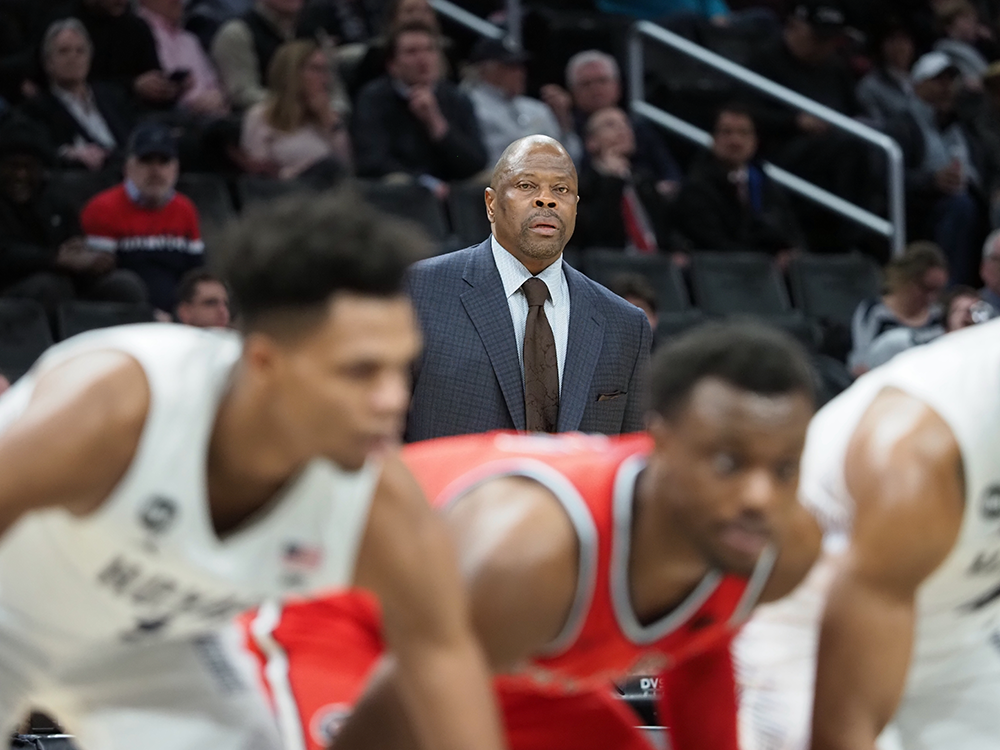






Lyrics • Jan 14, 2020 at 2:45 pm
very Nice